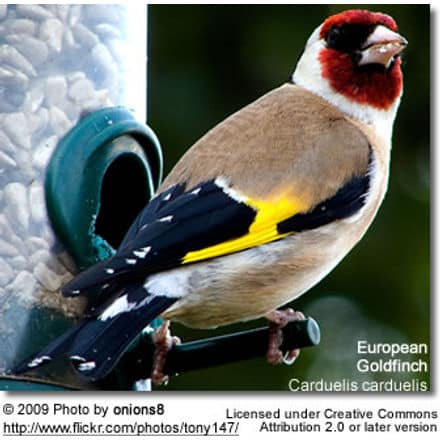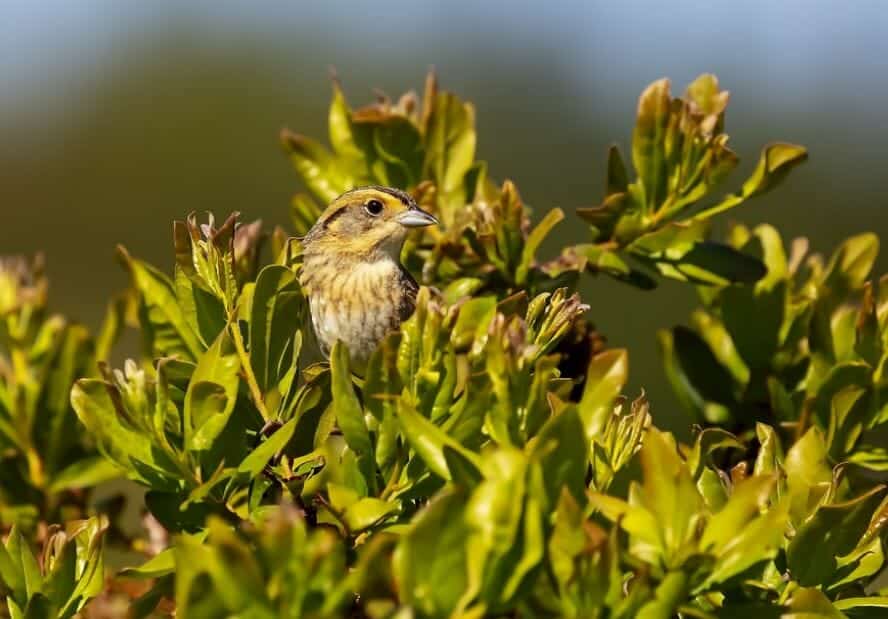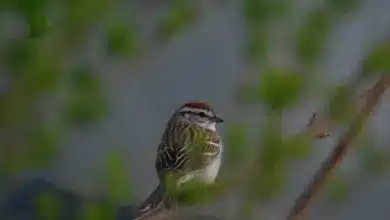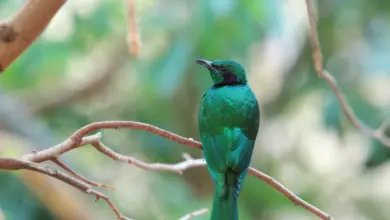Goldfinches or European Goldfinches
The Goldfinches or European Goldfinches, Carduelis carduelis, is a small finch.
The Goldfinch can be found across Europe and most of Asia in open, partially wooded lowlands. It is resident in the milder west of its range, but migrates from colder regions. It will also make local movements, even in the west, to escape bad weather.
This bird is a rare vagrant to eastern North America. In 2005, one was spotted and photographed on a bird feeder in Michigan.
Description:
The Goldfinches is 12-13.5 cm (4-5 inches) long and weighs 16 to 22 grams.
Sexes are alike, with a red face, black and white head, warm brown upperparts, white underparts with buff flanks and breast patches, and black and yellow wings. The ivory-colored bill is long and pointed, and the tail is forked.
Juveniles have a plain head and a greyer back but are unmistakable due to the yellow wing stripe.

Call / Song:
The call is a melodic tickeLIT. The song is a pleasant tinkling medley of trills and twitters, but always including the trisyllabic call phrase or a teLLIT-teLLIT-teLLIT.

Below information courtesy of Mandy and Paul – Breeder of Canaries and Other Exotic Birds – Singing Wings Aviary – www.singing-wings-aviary.com (A great source for thesebeautiful little finches)
Mutations/Sub-species:
The European Goldfinch comes in a variety of mutations including: Tawny, Agate, Isabella, Pastel, Satinè, Yellow, Opal and Albino. The sub-species include: American Goldfinch (Carduelis Tristis) and the Himalayan Goldfinch (Carduelis Caniceps).
The Himalayan resembles the European Goldfinch except that it has an absence of black markings and tawny plumage is replaced with grey. Goldfinches have been cross breed with Canaries, Siskins and Linnets.
Diet:
A good Goldfinch diet must include a mixture of millets, cereal seeds, canary grass seeds, green food and live food. Sprouting seed is the simplest way to provide your birds with fresh greens and make a great weaning food. These birds are especially fond of Safflower, and Thistle.
Sprouted or germinated seeds are usually more easily accepted by “seed addicts” than fresh fruits and vegetables.
- Sprouted seeds are healthier as the sprouting changes and enhances the nutritional quality and value of seeds and grains. Sprouted seeds are lower in fat, as the process of sprouting utilizes the fat in the seed to start the growing process – thus reducing the fat stored in the seeds.
- Sprouted seeds will help balance your bird’s diet by adding a nutritious supply of high in vegetable proteins, vitamins, minerals, enzymes, and chlorophyll.
- Soaked and germinated “oil” seeds, like niger and rape seeds, are rich in protein and carbohydrates; while “starch” seeds, such as canary and millets, are rich in carbohydrates, but lower in protein.
- It is an invaluable food at all times; however, it is especially important for breeding or molting birds. Sprouted seeds also serve as a great rearing and weaning food as the softened shell is easier to break by chicks and gets them used to the texture of seeds.
They will require more green food when breeding. While they are not as insectivorous as some birds they do enjoy live food. Ant eggs, small mealworms, waxworms and fruit fly larva can be mixed in with soft food and offered daily.
Fresh water, cuttlebone and grit should also be supplied at all times. Lettuce, Spinach, Chickweed, spray millet, Eggfood, Brocolli tops and Carrot tops can also be offered on a regular basis.
Compatibility:
European Goldfinches can be kept in a mixed aviary with birds of similar size or in individual pairs.
Housing:
Many European Goldfinches are housed in individual breeding cages much like Canaries. However, they will thrive in a large planted aviary with plenty of room to fly and sing. These birds are quite the acrobat and can be seen hanging upside down on perches and twirling off one perch to another.
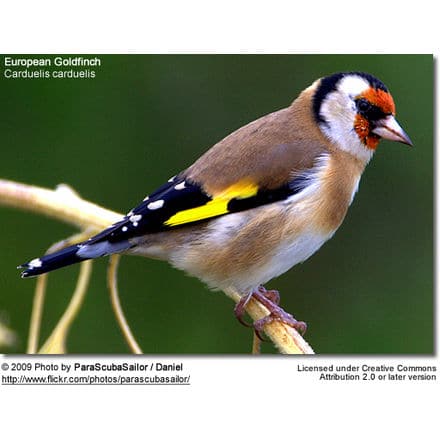
Please also refer to:



